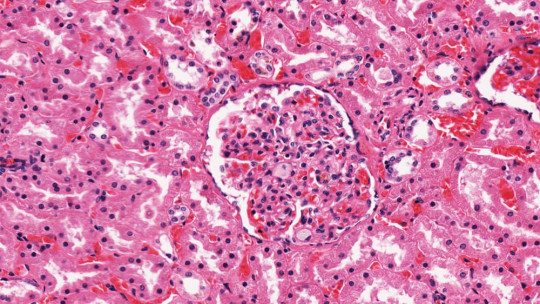
Over the years, people’s brains are susceptible to suffering from some type of condition or disorder that affects a large number of abilities such as lucidity and the ability to speak or moods.
One of these conditions is frontotemporal dementia It is a genetically based disease that we will talk about throughout this article, explaining its symptoms, causes, how it is diagnosed and what its treatment is.
What is frontotemporal dementia?
Frontotemporal dementia (FTD) is a clinical condition caused by a deterioration of the frontal lobe of the brain This deterioration can expand, also affecting the temporal lobe. Frontotemporal dementia is also the most common type of dementia after Alzheimer’s.
Within the category of frontotemporal dementia we find a number of progressive dementias, which manifest themselves through alterations in the person’s personality, behavior and oral language
Diseases related to this type of dementia are:
The main difference between frontotemporal dementia and other types of dementia is that in this first memory is not affected until the disease is in a very advanced stage
In addition, this dementia is also distinguished by appearing in people who are not as advanced as the rest of the diseases. It usually appears in people between 40 and 60 years old; although this is susceptible to appearing at any age.
What symptoms does it present?
Within the symptoms of frontotemporal dementia there are two large groups: Personality alterations and deterioration in the ability to communicate orally As mentioned above, memory is not affected early in this dementia.
Personality alterations
The deterioration of the frontal and right areas of the brain causes judgment, personality and the ability to carry out complex tasks to be seriously compromised in these patients.
People with prefrontal dementia may engage in negative behaviors such as inappropriate behavior in public places, lack of inhibition, aggressiveness or showing apathy Likewise, social skills can also be affected, causing the person to lose empathy, discretion or diplomacy when starting a conversation.
On many occasions, these patients have their problem-solving and decision-making abilities affected; affecting their daily tasks in a very serious way.
When this symptomatology is very obvious or of considerable magnitude can be confused with depression or a psychotic disorder such as schizophrenia or bipolar disorder.
Speech alterations
As discussed above, prefrontal dementia can interfere with a person’s ability to use and understand oral language. When these symptoms manifest, we can talk about semantic dementia or primary progressive aphasia, depending on the combination of symptoms they present.
In semantic dementia, both temporal lobes are affected, damaging the ability to recognize and understand words, faces and meanings Meanwhile, in primary progressive aphasia it is the left part of the brain that experiences deterioration, thus interfering with the ability to articulate words, as well as to find and use the correct word when speaking.
What are the causes of DFT?
Although the exact causes of this dementia are not yet known, around 50% of the population suffering from frontotemporal dementia has a history of it or some other type of dementia in their family clinical history; Therefore, it is hypothesized that it has an important genetic component.
There are a series of mutations that have been linked to frontotemporal dementia. This mutation occurs in the TAU gene and in the proteins that this gene helps to generate The accumulation of these defective proteins forms the so-called Pick bodies, which interfere with the work of brain cells in a way similar to the plaques that appear in Alzheimer’s disease.
However, in frontotemporal dementia the main affected areas are the frontal and temporal lobes, responsible for reason, speech and behavior.
How is your diagnosis made?
It is common for frontotemporal dementia not to show significant symptoms during the early stages of the disease, so this tends to go unnoticed, in many cases for more than three years before its diagnosis, until some significant alteration in behavior leads the family to think that something strange is happening to the patient. This is when most diagnoses of the disease are made.
Following established by the Diagnostic and Statistical Manual of Mental Disorders (DSM-IV), the guidelines for the evaluation of frontotemporal dementia are essentially clinical. These must include a record of behavioral changes and an examination of language alterations Additionally, a series of neuroimaging tests and neuropsychological tests will be carried out.
With the structural analysis carried out using magnetic resonance tests, the aim is to find signs of atrophy in the frontal lobes characteristic of the early stages of the disease.
To rule out the possibility of Alzheimer’s disease it is necessary to perform a positron emission tomography which must show an increase in frontal and/or temporal metabolism to be considered frontotemporal dementia.
Which is the treatment?
As with other dementias, a remedy for this type of condition has not yet been found. However, there are a series of medications to alleviate the effect of frontotemporal dementia symptoms as well as to try to stop its advance.
Typically, medical staff rely on the patient’s needs when choosing the most effective medication. The pharmacological treatments of choice in these cases include:
Pharmacological treatment, together with psychosocial support and assistance in carrying out daily tasks They are essential so that the patient can enjoy an optimal quality of life. Usually, the average life expectancy given to these patients is approximately 8 years from the moment of diagnosis.








